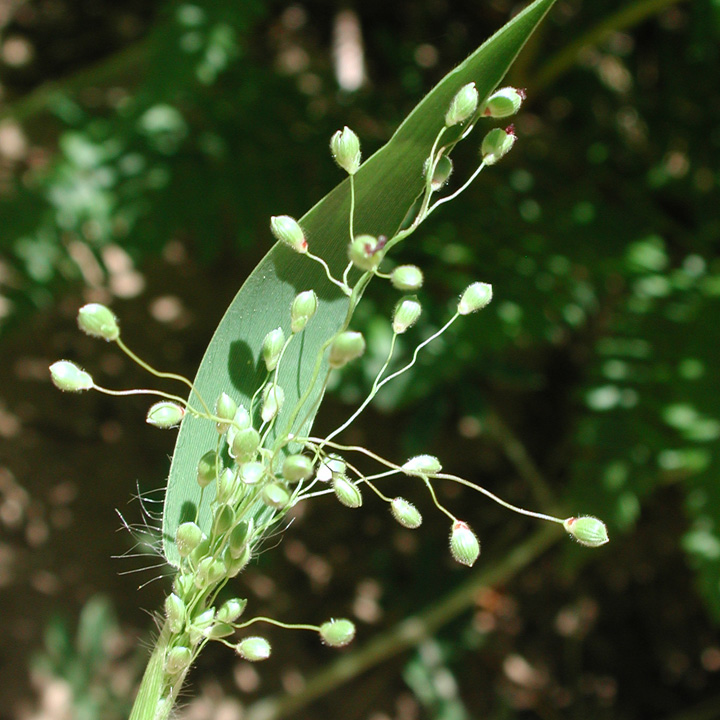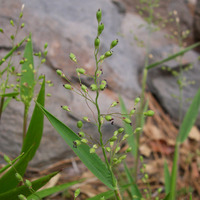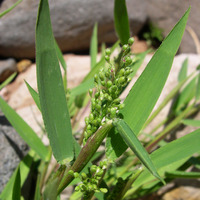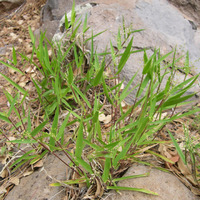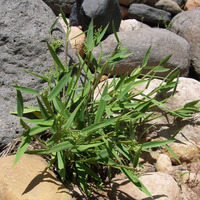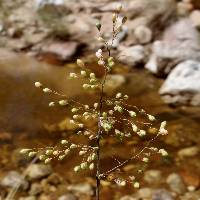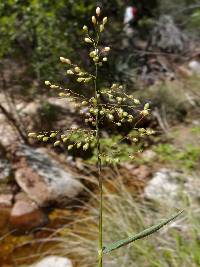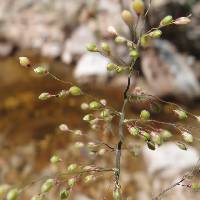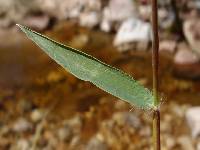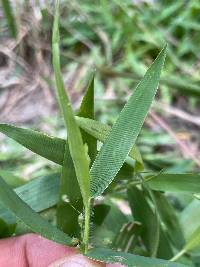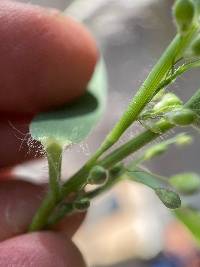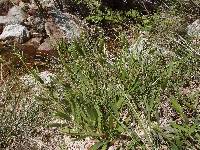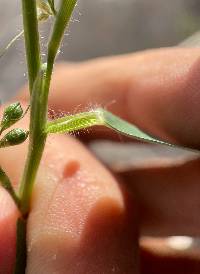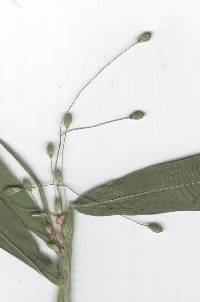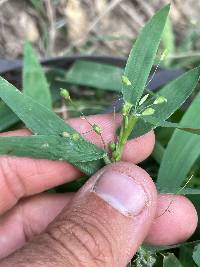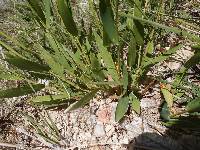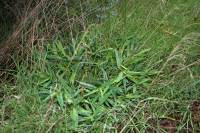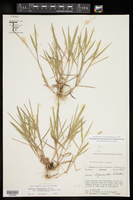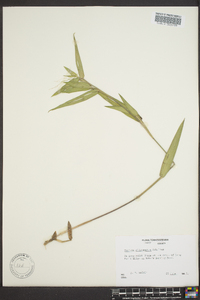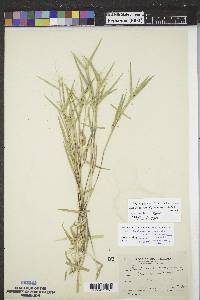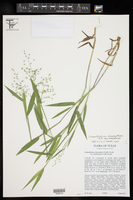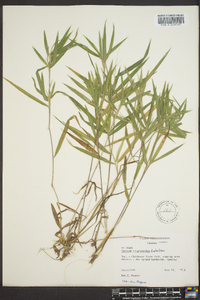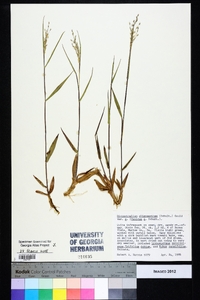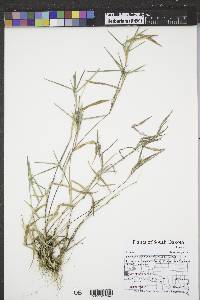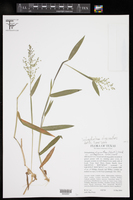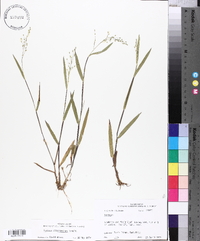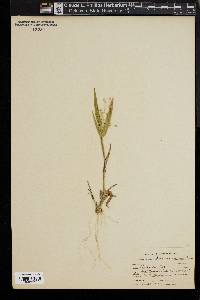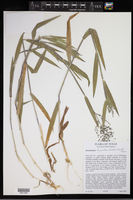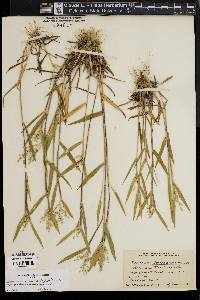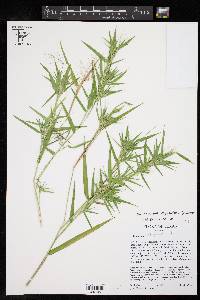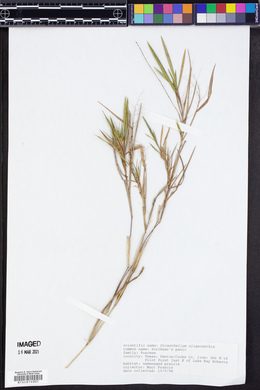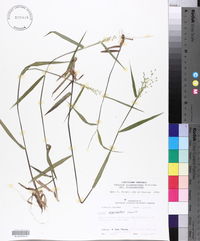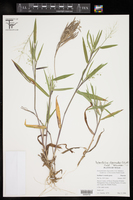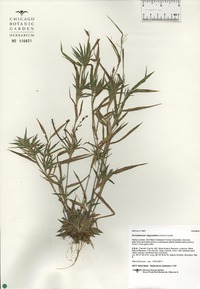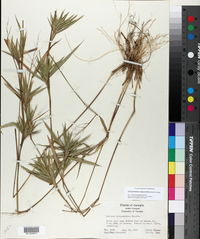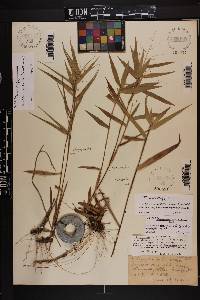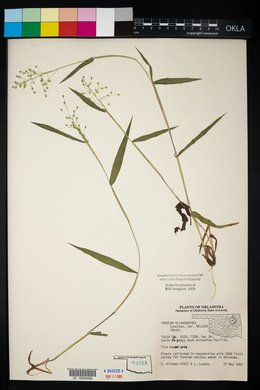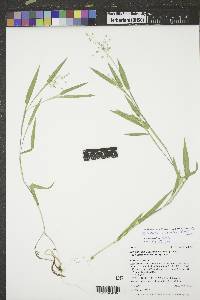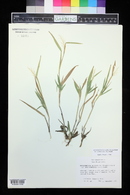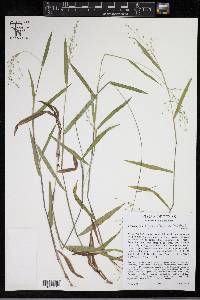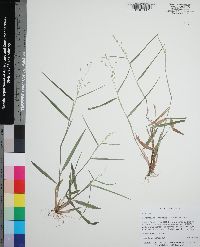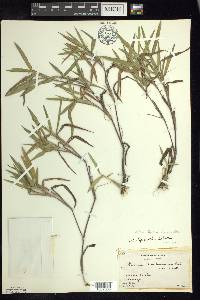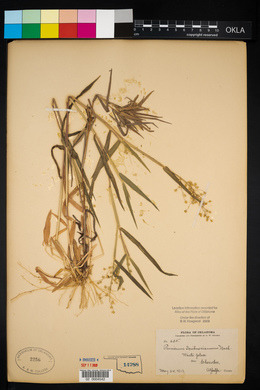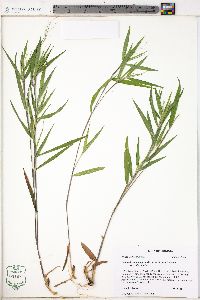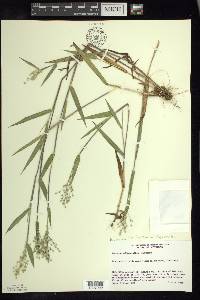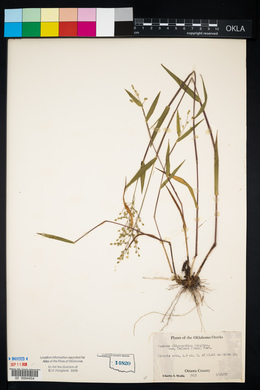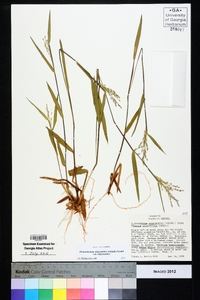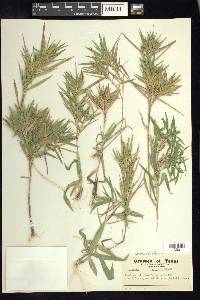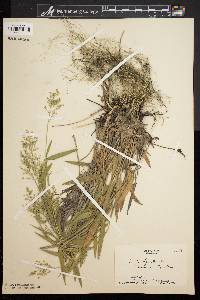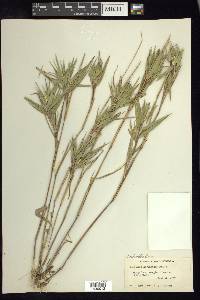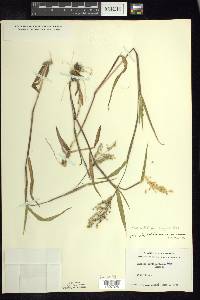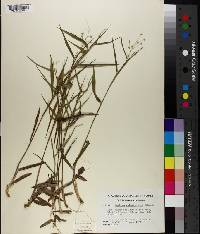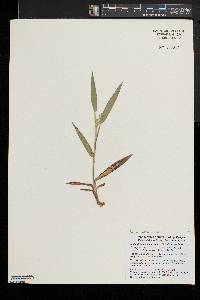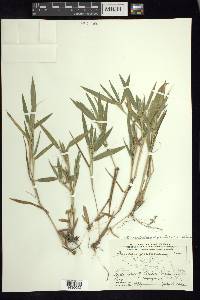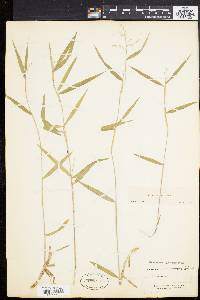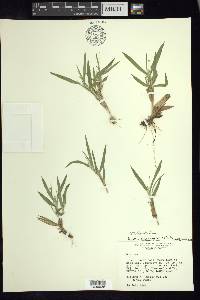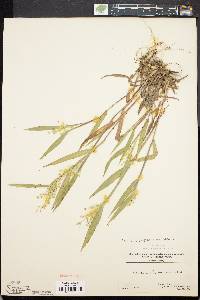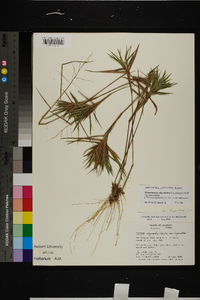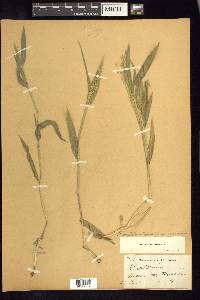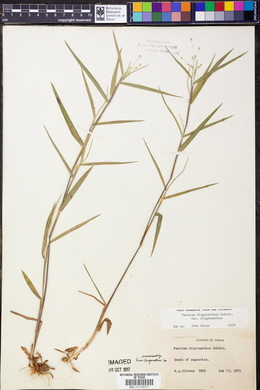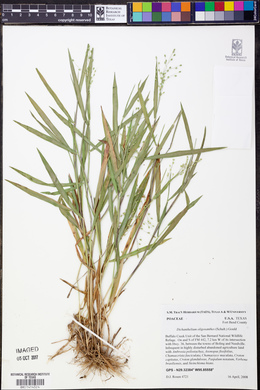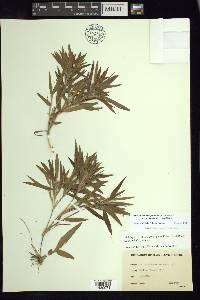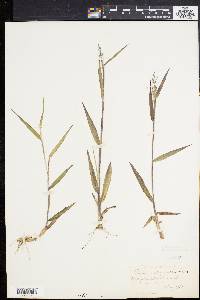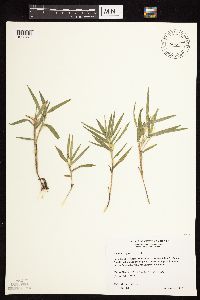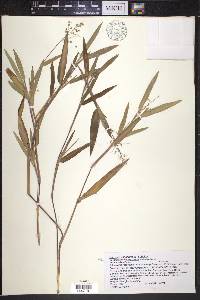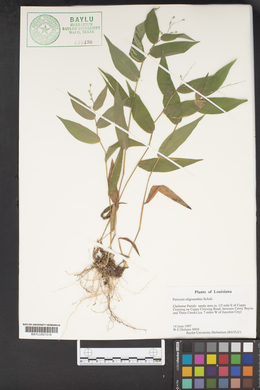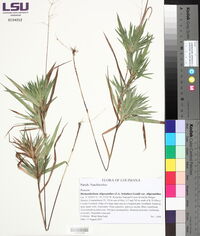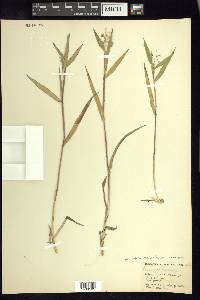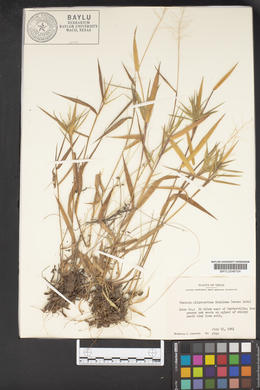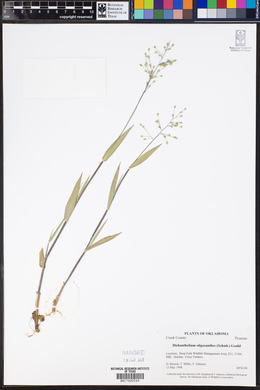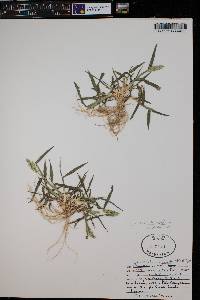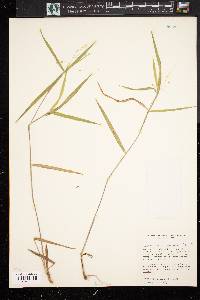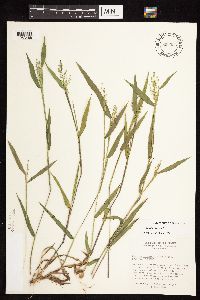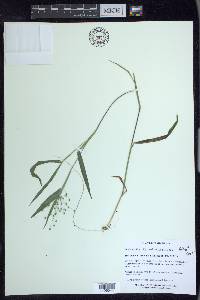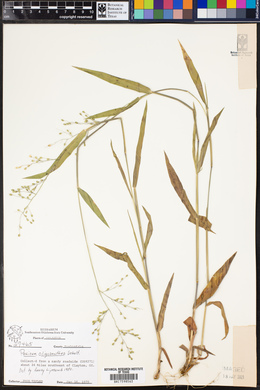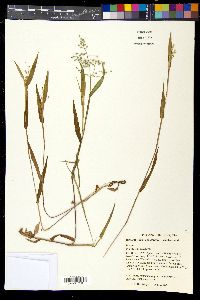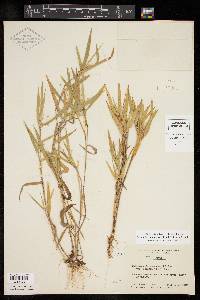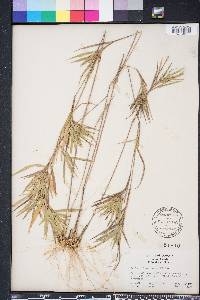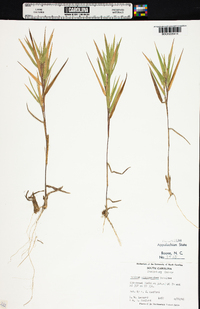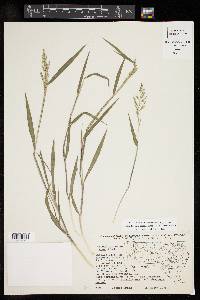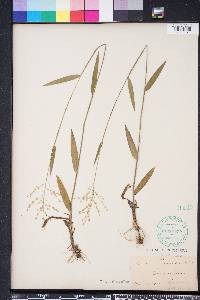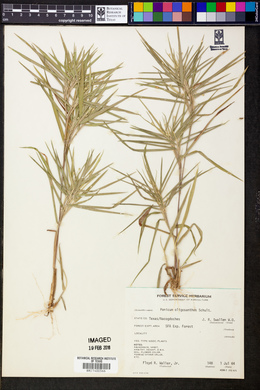
|
|
|
|
Family: Poaceae
Few-Anther Witch Grass, more...Heller's Witch Grass, Heller, Heller's Witch Grass, Few-Flowered Panicgrass, Heller's rosette grass, Heller's rosette grass
[Dichanthelium oligosanthes subsp. oligosanthes, moreDichanthelium oligosanthes var. fasciculatum (Torrey) Spellenberg, Dichanthelium oligosanthes var. oligosanthes , Panicum oligosanthes Schult., Panicum oligosanthes oligosanthes , Panicum scoparium var. angustifolium Vasey, Panicum scoparium var. pauciflorum Scribn.] |
Plants cespitose, with caudices. Basal rosettes well-differentiated; blades 2-6 cm, few, ovate to lanceolate. Culms 20-75 cm, geniculate basally, stiffly erect distally; nodes glabrous or sparsely pubescent; internodes often purplish, glabrous, puberulent, or papillose-hirsute; fall phase branching from the midculm nodes, branches initially ascending to erect, sometimes developing simultaneously with and overtopping the primary panicles, later rebranching to form short, bushy clumps of blades and small, included secondary panicles. Cauline leaves 5-7; sheaths not overlapping, glabrous, puberulent, or ascending papillose-hispid, margins ciliate, collars loose, puberulent; ligules 1-3 mm, of hairs; blades 5-12 cm long, 4-15 mm wide, flat or partly involute, glabrous or pubescent abaxially, with 7-9 major veins only slightly more prominent than the minor veins, bases ciliate, rounded to truncate, margins cartilaginous. Primary panicles 5-9 cm long, 3-6 cm wide, partly enclosed to long-exserted, with 6-60 spikelets; branches stiff or wiry, puberulent or scabridulous. Spikelets 2.7-4.2 mm long, 1.7-2.4 mm wide, ellipsoid to broadly obovoid, turgid, glabrous or sparsely pubescent. Lower glumes 1-1.6 mm, acute, similar in texture and vein prominence to the upper glumes; upper glumes strongly veined, often orange to purplish at the base; lower florets sterile; upper florets with minutely umbonate apices. 2n = 18. Dichanthelium oligosanthes grown throughout the southern portion of the Flora region, and extends into northern Mexico. The primary panicles are briefly open-pollinated, then cleistogamous, from late May to early June; the secondary panicles, which are produced from June to November, are cleistogamous. The subspecies intergrade in areas of overlapping range, but they are usually distinct elsewhere. Specimens of Dichanthelium oligosanthes that have few elongated internodes, but those elongated more than usual, are often mistaken for D. wilcoxianum. Unlike that species, however, they have turgid spikelets with an orange spot at the base of the lemma, indicating that they belong to D. oligosanthes. Such specimens seem to be most common among collections made in the southern and southwestern states during November, February, or March. Sterile hybrids with Dichanthelium acuminatum have often been called Panicum scoparioides Ashe. Apparent hybrids with D. malacophyllum, D. ovale, and D. acuminatum subsp. columbianum are occasionally found. Culms 40-75 cm; internodes usually puberulent and also pubescent to pilose or appressed-hispid. Cauline sheaths usually puberulent and also pubescent to pilose or appressed-hispid; ligules 2-3 mm; blades usually 4-9 mm wide, more than 10 times longer than wide, stiff, spreading, usually densely appressed-pubescent abaxially, often involute towards the long-acuminate apices. Primary panicles with a few stiff branches; pedicels mostly 5-15 mm. Spikelets usually 3.4-4.2 mm long, 1.7-2 mm wide, ellipsoid to oblong-obovoid, usually sparsely pubescent. Upper glumes often with a faint orange spot at the base. Dichanthelium oligosanthes subsp. oligosanthes grows in dry, open, sandy, oak or pine woodlands. Its range extends from southern Ontario and New Hampshire to the Texas Gulf coast. It has not yet been reported from Mexico. Perennial herb, tufted 40 cm - 0.75 m tall Inflorescence: a terminal, branched arrangement of spikelets (panicle). Primary panicles atop the culms, having a few stiff branches, 5 - 9 cm long, 3 - 6 cm wide, partially enclosed to well-exserted, with six to sixty spikelets. Secondary panicles (when present) atop the branches. Fruit: a caryopsis, indehiscent, enclosed within the persistent lemma and palea. Culm: stiffly upright but knee-like basally, often purplish, 40 cm - 0.75 m long, round in cross-section, hollow, minutely hairy and also hairy to softly hairy or appressed-hairy. Nodes sometimes sparsely hairy. Fall phase branching from the mid-culm nodes, rebranching and forming short clumps of leaf blades and small secondary panicles. Spikelets: 3.5 - 4 mm long, 1.5 - 2 mm wide, ellipsoid or oblong to reverse egg-shaped, sparsely hairy, swollen. Basal leaves: in a rosette. Blades few, 2 - 6 cm long, egg-shaped to lance-shaped, distinct from stem blades. Stem leaves: five to seven, alternate, two-ranked. Sheaths not overlapping, minutely hairy and also hairy to softly hairy or appressed-hairy, fringed with hairs. Ligules 2 - 3 mm long, composed of hairs. Blades stiff, spreading, over ten times longer than wide, 4 - 9 mm wide, lance-shaped with a rounded to truncate (cut straight across) base and long-pointed tip, parallel-veined, densely appressed-hairy beneath, fringed with bumpy-based hairs basally, often with rolled-up margins toward the tip. Glumes:: Lower glumes 1 - 1.5 mm long, pointed at the apex, strongly veined, similar in texture to upper glumes. Upper glumes strongly veined, often with a faint orange spot basally. Lemmas:: Lower lemmas similar to upper glumes. Upper lemmas longitudinally lined, shiny, with rolled-up margins above. Paleas:: Lower paleas shorter than lower lemmas, thin. Upper paleas longitudinally lined. Florets:: Lower florets sterile. Upper florets bisexual, stalkless, with a minute protuberance at the apex, plump. Anthers three. Stigmas red. Similar species: No information at this time. Flowering: June to October Habitat and ecology: Frequent in sandy Black Oak savannas. Occurence in the Chicago region: native Etymology: Dichanthelium comes from the Greek words di, meaning twice, and anth, meaning flowering, referring to plants that may have two flowering periods. Oligosanthes means few-flowered. Author: The Morton Arboretum FNA 2003, Cronquist et al. 1977, Kearney and Peebles 1969 Common Name: Heller?s rosette grass Duration: Perennial Nativity: Native Lifeform: Graminoid General: Tufted perennial with well-differentiated basal rosettes, stems 20-50 cm tall, geniculate basally, stiffly erect above, internodes lustrous, glabrous to sparsely papillose hispid. Vegetative: Blades 6-15 cm long, 4-9 mm wide, less than 10 times longer than wide, flat, ascending to spreading, usually glabrous or sparsely pubescent below acute, with cartilaginous margins; ligules 2-3 mm of hairs. Inflorescence: Dense panicles 5-9 cm long, 3-6 cm wide, partly enclosed to long-exserted with 6-60 spikelets, flexuous branches, spikelets usually 2.5-3.5 mm long, 2-2.5 mm wide,broadly obovoid ellipsoid, usually glabrous; lower glumes 1-1.5 mm, acute, upper glumes strongly veined with a prominent orange to purplish spot at base. Ecology: Found in dry, open oak or pine woodlands often in sandy to clayey soils from 4,000-6,000 ft (1219-1829 m); flowers June-September. Notes: Ours is thought to be var. scribnerianum. Ethnobotany: Thought poisonous to horses. Etymology: Dichanthelium is from Greek dicha for bifid, and stemma a garland or crown, referring to the forked stamens, while oligosanthes means few flowered. Synonyms: Panicum oligosanthes, many others see Tropicos Editor: SBuckley, 2010 Culms loosely clustered, few-several, erect or ascending, 2-7 dm, often purplish, densely pubescent to glabrous; sheaths occasionally glabrous, sometimes papillose, more often papillose-pilose with ascending hairs; ligule a band of hairs 1-2 mm; blades spreading, lanceolate, glabrous or rarely sparsely papillose-pilose above, glabrous to softly hairy or sparsely papillose-pilose beneath, usually papillose-ciliate and densely long-hairy at base, the larger 6-12 cm נ7-12 mm; primary panicle short-exsert (to 5 cm), becoming long-exsert in age, ovoid, 5-10 cm; spikelets glabrous or minutely villosulous, with broad, heavy veins, turgid, broadly ellipsoid to obovoid, 2.7-4 mm; first glume two- fifths as long, broadly ovate; second glume and sterile lemma subequal, barely equaling the fr; autumnal phase sparsely branched, chiefly from the middle and upper nodes, forming loose bunches, the blades not much reduced, surpassing the few-fld panicles; 2n=18. Dry or moist, often sandy soil, open woods, and prairies; Me. to Fla., w. to Wyo. and Tex., and in the Pacific states. Highly variable, but not clearly divisible into vars. (P. helleri; P. scribnerianum; Dichanthelium o.) Gleason, Henry A. & Cronquist, Arthur J. 1991. Manual of vascular plants of northeastern United States and adjacent Canada. lxxv + 910 pp. ©The New York Botanical Garden. All rights reserved. Used by permission. From Flora of Indiana (1940) by Charles C. Deam Local in the lake area and reappearing on the low dunes of the southwestern part of the state. It grows in very sandy, dry soils on open, wooded dunes and cleared, open dunes and sand knolls. It is usually associated with Panicum Scribnerianum [= Dichanthelium scribnerianum] which is the more common species. These two grasses are closely related and most easily separated in the field. The leaves of this species are narrower and the upper ones are relatively longer and more spreading. ...... Indiana Coefficient of Conservatism: C = 8 Wetland Indicator Status: FACU Diagnostic Traits: Similar to the more common D. scribnerianum, but widest leaves only to 8 mm and usually more than 10× longer than wide; spikelets elliptical, obtuse. Thomas (2021) notes differences in habit (small colonies), habitat, and autumnal stage. |
|
|
|

